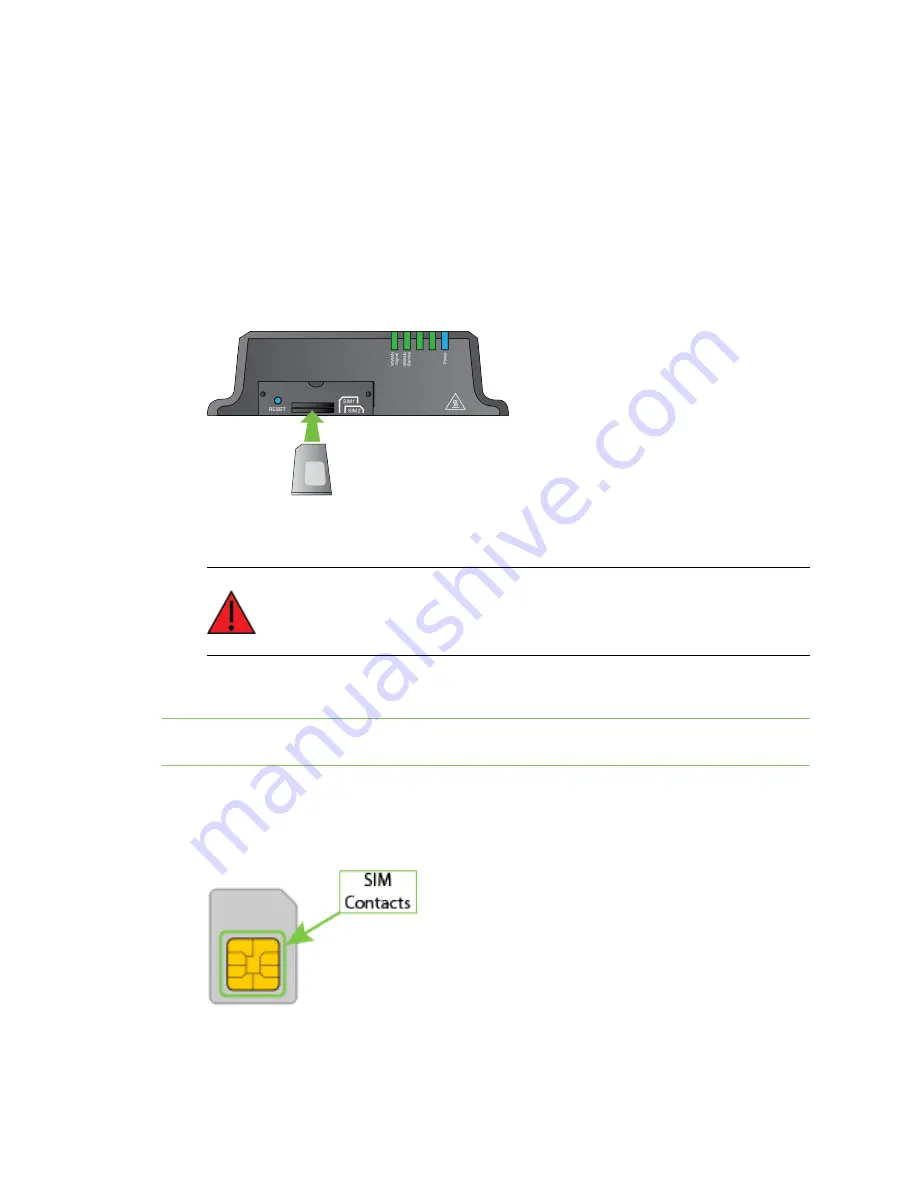
Hardware setup
Install SIM cards
IX14 User Guide
30
Install SIM cards
To install SIM cards:
1. On the IX14 front panel, use a #1 Phillips-head screwdriver to remove the SIM door.
2. If the IX14 device is used in an environment with high vibration levels, SIM card contact fretting
may cause unexpected SIM card failures. To protect the SIM cards, Digi strongly recommends
that you apply a thin layer of dielectric grease to the SIM contacts prior to installing the SIM
cards. See
Apply Dielectric Grease over SIM Contacts
for instructions.
3. Insert the SIM card(s) into the SIM sockets. Position the SIM cards to match the diagram on the
device.
4. After all SIM cards are in place, use a #1 Phillips-head screwdriver to carefully replace the SIM
door.
WARNING!
Take care when you tighten the screws on the SIM door. If you apply too
much pressure and over-tighten the screws, you can damage the SIM door or strip
the screw threads. Torque to 2.9 inch/pounds.
Apply Dielectric Grease over SIM Contacts
Note
Digi recommends using either …the Loctite® LB 8423 Dielectric Grease or Synco Lube® Silicone
Dielectric Grease.
1. Use a sheet of paper or cardboard over the area where you intend to work.
2. Use isopropyl alcohol and a cotton-tipped applicator to gently clean the SIM contacts. Using
isopropyl alcohol requires a well vented environment. Demineralized water can also be used as
an alternative.
Содержание IX14
Страница 1: ...IX14 User Guide Firmware version 22 2 ...
Страница 45: ...Configuration and management Exit the command line interface IX14 User Guide 45 Type q or quit to exit ...
Страница 515: ...Monitoring This chapter contains the following topics intelliFlow 516 Configure NetFlow Probe 523 IX14 User Guide 515 ...
Страница 756: ...Routing Virtual Router Redundancy Protocol VRRP IX14 User Guide 756 ...
Страница 803: ...Command line interface Command line reference IX14 User Guide 803 Parameters None ...
Страница 812: ...Command line interface Command line reference IX14 User Guide 812 reboot Reboot the system Parameters None ...






























